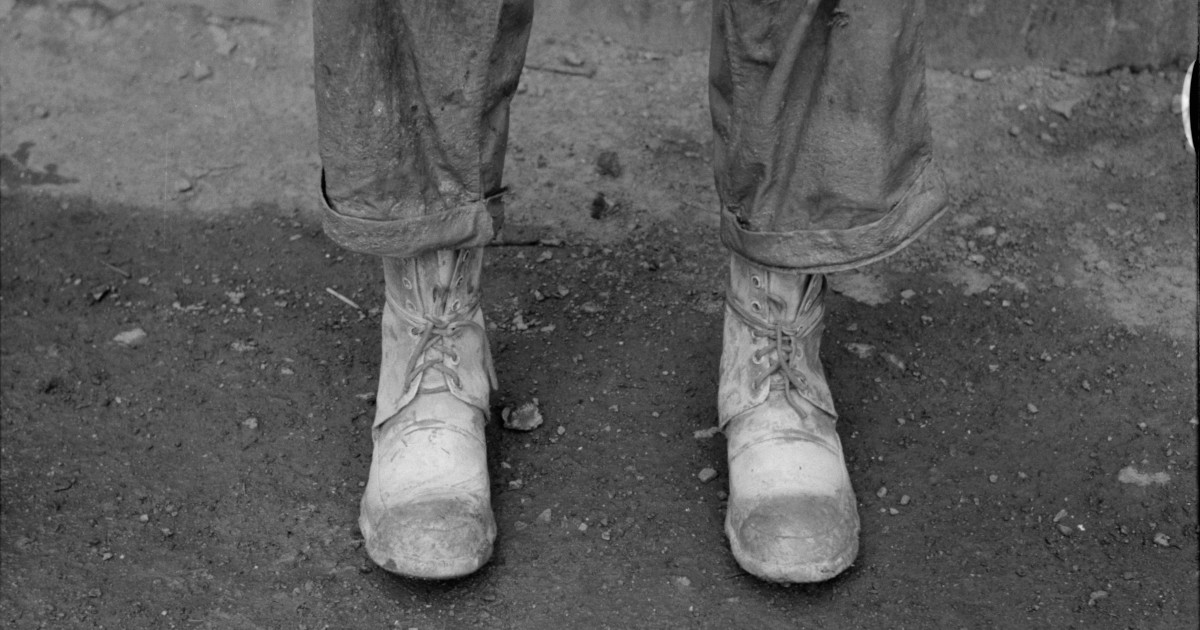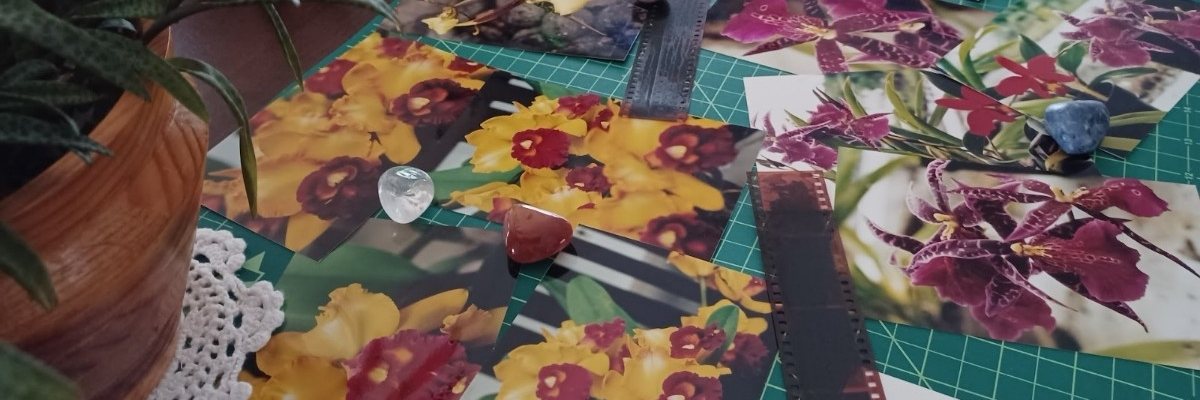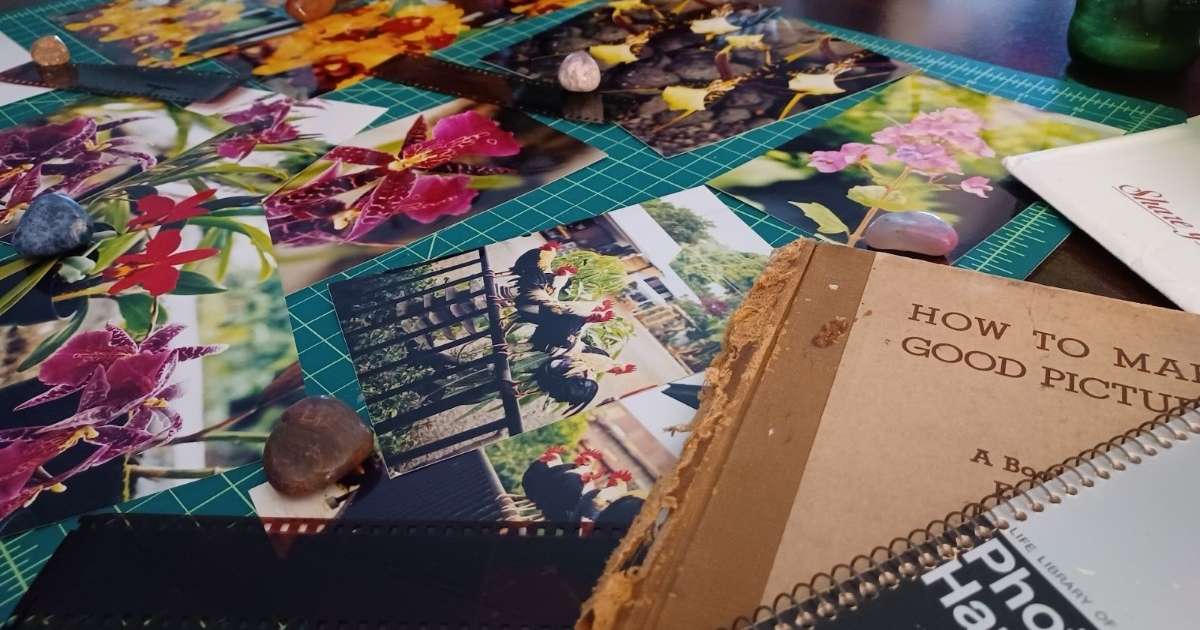When you have a story to tell but feel short on words, get out your camera and create a photographic essay.
A photo essay is a photojournalism technique that tells a story through a sequence of pictures. And it only uses words to clarify the content. You can use photo essays to explore any topic, from social issues to personal experiences.
When the right photos are arranged in a logical order, your viewers have a better understanding of the story behind the individual or event than a single image or text-only content could convey.
All it takes is curiosity, self-motivation, and patience to find great photo opportunities and create a picture story.

TL;DR
- A photographic essay tells a story through a sequence of pictures. It can be used to explore any topic.
- Photographic essays are a powerful way to raise awareness and tell stories.
- A photographic essay includes a strong narrative, a clear focus, a cohesive style, and thoughtful captions.
- You don’t need to be a pro photographer. Develop a plan and grab a smartphone with a good camera.
- Find your comfort zone when starting out. Explore familiar surroundings while gaining confidence.
How to tell a story with a photographic essay: Examples through the decades
The photographic essay has been a storytelling technique journalists and photographers have used since the invention of the camera.
Photographers have documented a range of topics, from current events to personal experiences.
The following photographic essays are examples of the powerful ways photojournalism can tell stories and raise awareness about important issues.

The Farm Security Administration (FSA) created one of the first photo essays. These photos are archived at the Library of Congress. Between 1935 and 1944, FSA photographers captured American life during the Great Depression and the build-up to World War II.
These photographers focused on the construction of planned suburban communities, the lives of agricultural workers, and factories producing military machines. Photographers spent several months documenting their assigned areas, and the images show a raw, honest, and unedited view of the time and place.
W. Eugene Smith is credited as being the most powerful photojournalist of the 20th century. His work set the standards for the modern photo essay. His photos have a humanist perspective and a strong sense of empathy and social conscience.
Smith is well known for his essay Country Doctor about Dr. Ernest Ceriani of Kremmling, Colorado, in August 1948. It was published by Life Magazine.
The 1960s was the decade of war and peace. It started with the civil rights movement and a conflict in Vietnam and ended during a weekend music festival in Woodstock, New York.
During this time, photojournalists showed us the stark contrast of life in the United States. They were in the middle of these events, allowing the public to live vicariously through the camera lens.
Let’s move into the 20th century. Photographic essays have shown us the perils of living with a water crisis in Michigan, the dangers of fighting California wildfires, and older citizens who refuse to wither away while sitting in a rocking chair.
You can be a photojournalist and create a photographic essay. You only need a smartphone with a good camera and an interesting topic. You’re already creating photo essays if you share stories and photo albums on Instagram, Facebook, or another social site.

The elements of a photographic essay
There isn’t a right way to create a photographic essay. Every story is different, so the arrangement and format depend on how the photos can best be presented. Still, for a photo essay to impact your audience, it needs elements that tell the story and deliver the intended message.
Here are some of the key elements of a photographic essay:
A strong narrative. The photographs should work together to tell the story and have a common theme.
A clear focus. Decide on the story you want to show your audience and choose images that support that focus.
A cohesive style. You don’t have to take your photographs in the same way. Instead, they should have a similar look and feel.
Thoughtful captions. The captions should be informative and provide context for the photographs to help tell the story. And use as few words as possible.

Plan how to create a photographic essay and press the shutter button
There’s more than one way to tell a story. As a writer, you’re comfortable sharing information and expressing yourself in words. Photographers express themselves in pictures and use photojournalism techniques, such as the photographic essay, as a form of visual communication.
A photo essay allows you to stretch your creative limits and explore new ways to connect with your audience. It can be a powerful way to tell a story, whether it’s to educate, inform, or inspire.
You don’t need to be a pro to make a fun and creative photo essay. All you need is a plan. Follow these steps to plan and create a photographic essay that you’ll be proud to show off.

Stretching your photo skills and exploring different ways to express yourself can recharge your creativity when you’re at a loss for words. When you can’t spend time with your camera, find other ways to get over writer’s block.
Find your comfort zone
Everyone has their own comfort zone. If you’re just starting out, you’ll find your comfort zone in familiar surroundings, experiences, and people. Your comfort zone should also be undemanding. As you gain confidence, expand your zone.
When you’re in your comfort zone, exploring environments, experiences, and cultures other than your own is easier. You’ll be relaxed, and your inhibitions won’t get in the way of your creativity.
You don’t have to travel far to find an interesting or unusual story. Stories are closer than you realize. For example, look around you right now. You never know. You could find your next photo essay while looking out your back door.
You’ll find a story by digging beneath the surface of any person, place, event, or thing. Your challenge is to connect with that story and show it in a way that resonates with others.
After you’ve found your comfort zone and created a few photographic essays, consider moving out of your comfort zone and exploring new areas and ideas.
But the key to any successful photo essay is being proactive rather than waiting for inspiration to discover what is happening around you.
Select a subject for your photographic essay
Next, you’ll decide what your photo essay will be about. Your photo essay can be about anything. It can be a personal experience, an individual, a group of people, your favorite charity or cause, or a current event.
Any subject is the perfect material for a photo essay. Choose a topic you are passionate about or that stirs your enthusiasm. And find a story that you can tell through pictures.
If your photographic story is about another person’s life, experience their life. Walk a mile in their shoes, so to speak. Or you could tell a story about a place, such as a botanical garden or a favorite swimming hole. Either way, you must explore and experience it.
You’ll tell the best story when you immerse yourself in the environment and see beneath the superficial.
Next, you’ll establish a point of view, your angle for the story. Your angle may change after you start taking pictures, but you’ll need a rough idea of how you want to cover the story before you begin. If you’re unhappy with your point of view, explore the feelings you experienced during the photo session.
To capture the perfect shots for the photo essay, you’ll prepare the same way you do as a writer. You’ll start by doing your research. This research will help you understand the topic better and identify the key points you want to make in your photo essay.
Do your research
Like a well-crafted feature story, the photo essay must be coherent and honest. You’ll achieve this when you connect with the people or events involved. You’ll make this connection by researching, observing, and asking questions so that you have a clear picture of what is happening.

Finding a story your audience won’t hear anywhere else takes curiosity, perseverance, and patience. It’s all about honing your journalism soft skills and telling a story that engages your audience.
Before you start shooting pictures, make sure you have permission to use the images of the person or place. The law usually states that a photographer has the right to take a picture of any person while in a public place under these conditions:
- The photo can’t be used to advertise a product or service
- The image can’t portray the person in a damaging light (called defamation of character).
If you and the subject are on private property, get the owner’s permission before taking the pictures.
Here are one photographer’s tips for doing research.
Find your point of view
While taking photos, you’ll change your point of view. You’ll create portrait, overall, and detail images for a close look at your subject. You’ll also capture action and decisive images during the event. These styles are different, so tackle the two types separately rather than alternating between the two.
You can plan the timing, subject matter, or location of the images you create to match your vision for the photographic essay. This planning is where your collaboration and listening skills will serve you well.
You can’t plan the decisive images and action shots you capture. These require you to focus solely on your subject and take photos as events change or unfold. These images are photographed spontaneously and intuitively.
Nikon has a quick tip for capturing great action shots. All you need to do is find the continuous shooting mode on your camera.
Whether you’re taking action shots or portraits, consider your impact on the person, event, or activity. Practice working unobtrusively to minimize your effect on the subject. You can achieve this in the following ways:
- Use your camera to take the image, not find the image.
- Be decisive. Don’t procrastinate.
- Don’t bring a lot of stuff with you.
- Use ambient light, not a flash.
- Wear appropriate clothing.
- Move with the activity.
- Be familiar with your subject.
Take the photos: Get the right shots
When you’ve done your research and connected with the individuals who can grant permission to take photos of the subject, get out your camera and go to work. Take a variety of photographs that capture different aspects of your topic.
There’s a limit to the story you can tell by being static and recording the subject from only one vantage point. Move around and explore a variety of distances from the subject. Plus, you must be a witness or participant rather than a spectator.
The images that create a well-crafted photographic story can be grouped into four categories. Not all stories contain images from each category, but combining photos from most of these categories makes for a better story.
Environment or establishing image. Look for a vantage point where you can place the subject in context with the environment. If a photo essay is about a tulip farm in a valley, show your audience a view of the valley to set the scene or create a mood. This photo is your establishing shot, but it doesn’t have to appear first in the story.
Action image or decisive moment. This medium-distance shot captures the action and interaction of the subject and the surroundings. Many of your photo essay images fall into this category. Unless the activity unfolds quickly and a sequence is required, change vantage points frequently. Too many images of the same action from the same vantage point are visually repetitive.
Portrait and environmental portraits. People are interested in people and viewers want to identify and make a connection with the characters of the story. Create visual interest by taking photos at different distances. Take headshots and portraits where the subject is seen in the story’s location.
Close-up and detail images. These photos identify significant details in the scene. The detail is enlarged to draw the viewer’s attention to it or increase the amount or quality of the information. Detail images may allow the viewer to read an inscription or see a close-up of the subject, such as a person’s hands at work.
Choose your photos: Tips to create a photographic essay
Finally, it’s time to choose the photos you’ll use in the story. In this stage, select images that work together and create a cohesive narrative. And if your audience needs some context to follow your story, add captions or short titles.
As you work through your plan and create the photo essay, remember that you control the messages the images communicate. Consider how those messages might make others feel or persuade them to think a certain way. What effect do you want your photo essay to have on people?
The aim of editing your photos is to select a series of images that narrate a compelling story. Editing can be the most demanding aspect of the process. It requires focus, energy, and maybe a compromise between what you wanted to communicate and what can be said with the photos you took.
Don’t get emotionally connected to the content of the images. When you detach yourself from your work, you can focus on the photos and how they narrate the story, how effectively they tell it, and how suitable the content is for your audience.
Here’s the process you’ll follow:
- Select photos that are visually interesting and informative.
- Group your photos into the four categories.
- Place the groups in various ways to explore possible narratives.
- Select photos from each group that reinforce your story.
- Remove photos that contradict your story.
- Decide on the final sequence for the photographic essay.

Create a shot list or storyboard. It will help you organize your photos and visualize how the story progresses.
After you’ve selected the photos and settled on the order they will appear, it’s time to write the captions. These captions should provide context for the photographs and help tell the story. But keep them short.

What’s next? Create the photographic essay and publish it
Creating a photo essay can be a lot of work, but it’s a rewarding experience. If you want to tell a story through photography, a photo essay is a great way to do it.
How do you share your story with your audience? You have several options. If you designed a portfolio website, this is a great place to start. Along with sharing your story, you can show prospective clients your creative side and your flexibility.
When you want to reach a wider audience, publish your photo essay on social media.
Or, if you’d rather keep your photo essay private, create a photographic essay as a slideshow that you can share when you get together with friends and family. Play the slideshow on a TV or computer screen for some after-dinner entertainment.
FIND RELATED ARTICLES
